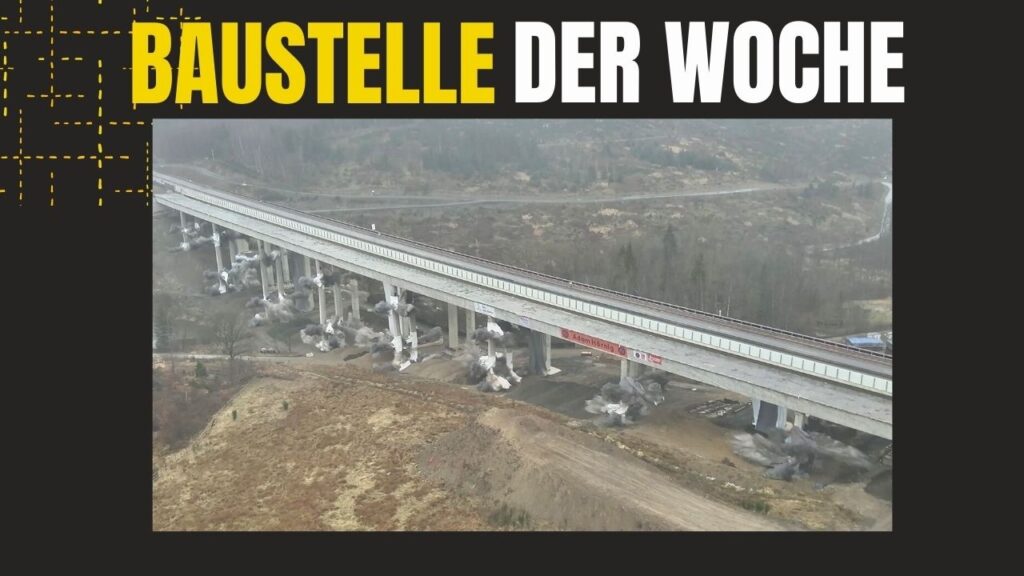
Construction site of the week – A45 viaduct: Second section successfully blasted

On Sunday, 30 March 2025, the second section of the A45 “Landeskroner Weiher” viaduct was demolished by blasting near the Hessian state border in the NRW district of Siegen-Wittgenstein. Many onlookers were not deterred by the light drizzle from seeing the blasting, which was carried out by REISCH Sprengtechnik GmbH, with their own eyes.
Preparations took two months due to weather-related problems. A total of 336 holes were drilled and loaded with almost 50 kilograms of explosives. To ensure that the 377-metre-long and 36-metre-high bridge, which was built in 1967, could come down safely and in a controlled manner, 7,600 cubic metres of earth were used to build a drop bed underneath it. The section towards Dortmund fell in October 2022. Now it was the turn of the section towards Frankfurt.
As with the first blasting, the second section of the structure was also levelled in the weeks beforehand. Firstly, the asphalt layer was removed from the bridge section and then the crash barriers, the edge and centre caps and the railings were dismantled. As the new bridge was in the immediate vicinity, its piers were protected in order to prevent damage from flying debris.
Security as top priority
On the blasting day itself, the meticulously planned procedure had to be adhered to. Around 65 helpers from the Federal Agency for Technical Relief (THW), the fire brigade, the police and the drone team were deployed to ensure the safety of the blast, taking up positions one hour before the actual time of the blast. The aim was to ensure that nobody entered the cordoned-off area. The A45 motorway was closed in both directions until the afternoon. Safety was also the top priority for this blast.
The first blast signal sounded at 10:45, followed by the second at 10:55. Shortly before the actual blasting, the scaring charge was detonated at 10:58 and the actual blasting of the structure took place at exactly 11:00. Four seconds later, the 16 pillars folded and, like the superstructure, fell as planned onto the prepared drop bed. Explosive cord 100 g/m and non-electric and electric detonators were used. Eduard Reisch was satisfied with the result: “All the charges detonated. The bridge is exactly where it should be,” said the demolition expert.
New bridge remained intact
After the blast, the piers of the newly built bridge were examined by structural inspectors and structural engineers with the help of high-resolution drones to rule out damage to the northbound bridge. The all-clear was given at around 2.30 pm. The vibration values had remained within limits and no damage to the new bridge had been detected. The full closure of the A45 was then lifted and traffic was able to flow again.
Another step towards an intact infrastructure
The following day, the site clearance work began. The 10,000 tonnes of demolition material were removed, separated and processed for recycling. Around six weeks were planned for the work under the bridge. Preparations then began for the construction of the second section. The blasting of the second section is part of the six-lane expansion of the so-called Sauerland Line, one of Germany’s most important transport arteries. Work on the new replacement structure at Landeskroner Weiher has been underway since the end of 2021. The blasting was another important step towards an intact infrastructure. The new bridge is scheduled for completion in summer 2027.
You can find more photos on our Instagram and Facebook channel.
You can find a video of the project on our YouTube channel.
Pictures: REISCH Sprengtechnik GmbH




